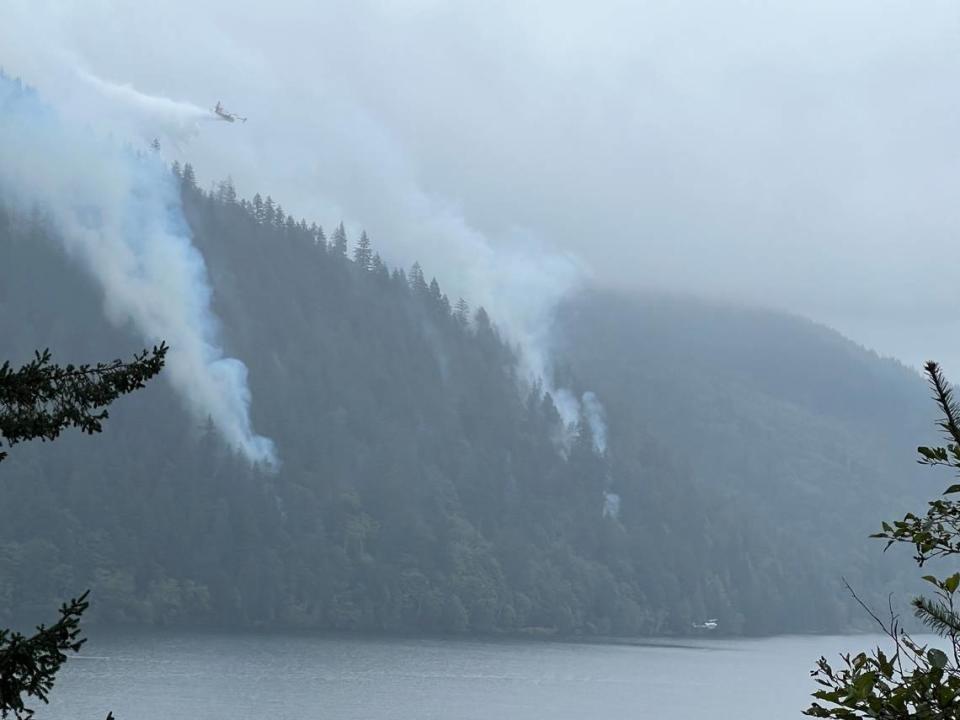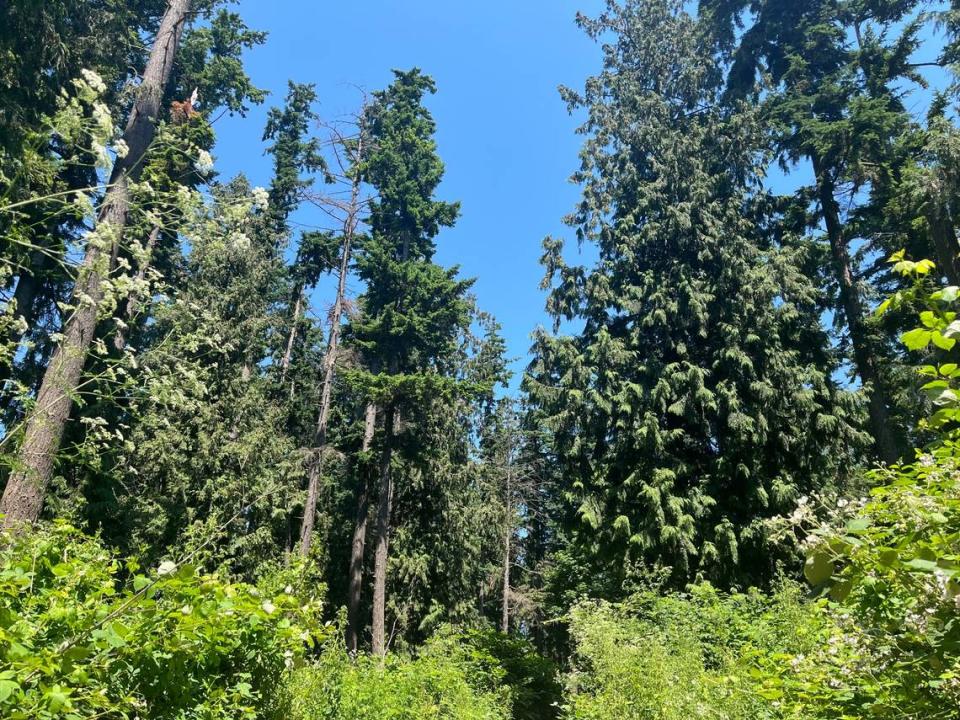Whatcom environmentalists fear widespread tree loss with new state building codes
New Washington state building codes designed to protect future developments from wildfires may have an unwanted effect: fewer trees.
The new codes are expected to go into effect in March 2024, but the state is seeing widespread pushback, including in Whatcom County, over concerns about the codes’ potential impact on the urban forest canopy and livability.
“There’s just frankly a lot of shock at this,” Whatcom Million Trees Project Executive Director Michael Feerer said in an interview with The Bellingham Herald.
The group is dedicated to preserving trees in Whatcom County and has been outspoken about its concern over potential tree loss due to local development projects.
The state’s new building code issues guidance for “building hardening” and creating up to 100 feet of “defensible space” around new structures built in areas known as the Wildland-Urban Interface (WUI). The U.S. Fire Administration classifies the WUI as the zone of transition between unoccupied land and human development. It is the area where structures exist next to undeveloped wildlands or vegetative fuels and could be at a higher risk for wildfire damage.
In the adopted WUI code, the minimum defensible space requirement is 30 feet or the property line, whichever is less. The code also requires a 10-foot distance between tree crowns, continued maintenance of fire fuel like grass and shrubs, and provides measures for achieving proper maintenance.
It does not require clear-cutting of trees, according to the Washington State Department of Enterprise Services Chief External Affairs Officer Linda Kent.
A new Washington State Department of Natural Resources Wildland Urban Interface map serves as a tool to depict these areas across the state and is being used to inform the building code. The map indicates that large portions of Bellingham and Whatcom County, particularly along the coast, exist in a WUI zone.

Amanda Monthei is based in Whatcom County and produces a podcast called Life with Fire that explores broadly how to coexist with fire. She also works as a public information officer on fires during the summer months.
She said creating defensible space around developments in WUI zones is increasingly important, especially as climate is changing and fire events are becoming more frequent.
“The importance of defensible space cannot be overstated, even in our ecosystems over here on the west side. I think there is a growing understanding of how much more pressing this need for defensible space is on this side of the mountains,” Monthei said.
Feerer, the million tree project exec, said he is fully supportive of the parts of the code that address retrofitting requirements and clearing combustible materials directly around new buildings to prevent ignition during fire events.
But he is worried the building code relies too heavily on the DNR map, which he says doesn’t paint a full picture of fire risk.
“The map applies fire protections in areas that are not truly at risk for fires and also applies solutions to areas that do not need them,” Feerer wrote in a white paper outlining his concerns.
Tree loss a concern
Feerer said his main concern is that the new code could require extensive and unnecessary tree removal locally and across Washington.
“The vast majority of our coastal community, other than downtown cores, all would be impacted by this,” Feerer said.
And, he pointed out, this doesn’t just apply to commercial buildings.
“Anybody that wants to get a building permit for either a new home or home expansion would conceivably be under these rules,” he said.
The city of Bellingham is in the process of developing its first Urban Forestry Management Plan to help maintain a healthy and desirable urban forest through long-term, sustainable planning. Feerer worries this new state building code contradicts the work of local governments to maintain tree canopy.
City staff told The Bellingham Herald they currently are working with a consultant to determine appropriate actions for their forestry plan and are reviewing the 2021 Wildland-Urban Interface Code for conflicts.
City staff plan to present an update on the Urban Forestry Management Plan status at a city council meeting on Nov. 20.

The state DNR was asked to map the WUI in Washington State for the purpose of building code adoptions and the map uses federal definitions to define what land is in the WUI. But DNR’s Forest Resilience Division Communications Manager Will Rubin told The Herald that a lot of nuance is needed in determining fire risk and this map is just one piece of the puzzle.
“A WUI map, by definition, is not a wildfire risk map. It’s a tool to help determine wildfire risk and that’s a really important distinction,” Rubin said.
The map does not take into consideration other fire risk factors like climate, different environments or the varying resiliency of vegetation and trees.
“It’s meant to be used in conjunction with a wildfire risk map and any other tools that are available,” Rubin said. “It’s not a standalone determination that an area is at a high fire risk.”
Impacts on livability
Feerer also has concerns about the new code’s impact on livability. He said Whatcom County needs to focus on “nature-integrated development” by intentionally maintaining an adequate tree canopy while building infill housing.
“This (building code) would kind of knock all that out the window,” Feerer said. “Are we really looking at living in a diluted landscape of trees? Most people probably in our community live here because they love the trees.”
The city of Bellingham Planning and Community Development Director Blake Lyon said the city is still working to understand how these new building code provisions will affect Bellingham properties. He said the city will ensure every new development project complies with state code and local regulations.
“The City continues to promote infill residential development within our Urban Villages and existing core neighborhoods. Many of these locations are not considered to be within the state’s Wildland Urban Interface area,” Lyon said in a statement to The Herald. “As a result we would not expect substantial impacts to development potential within those areas.”
Lyon said it is difficult to predict the full extent of the associated impacts of the new code but, generally, “additional development regulations often have cost and permitting implications.”
The state is aware of Issues that have been raised since the code was adopted. The Washington State Building Code Council voted to start an emergency rule at its Oct. 20 meeting to reevaluate and potentially amend the defensible space requirements.
The WUI code requirements are also expected to be discussed at the state building code council’s next meeting Nov. 17.

